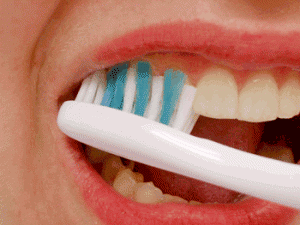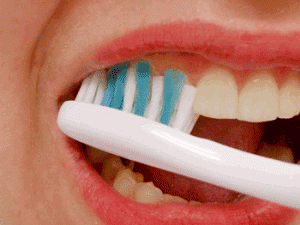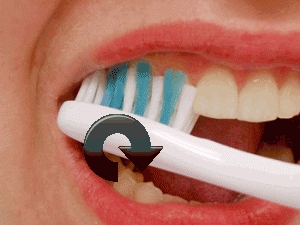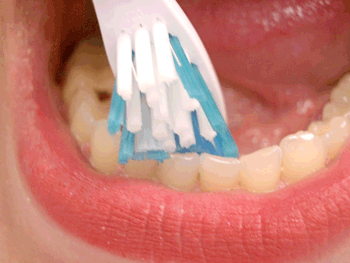
How to Brush Your Teeth Correctly with a Manual Toothbrush

The Key to Brushing Your Teeth
When learning how or teaching your children to brush effectively, the absolute most important thing is to practice brushing in the beginning without any toothpaste and using only a wet toothbrush until you have the hang of it.
Tactile feedback from the bristles around your teeth and along your gums is essential in ensuring that the right areas are cleaned and cleaned well. Practicing without all the sudsy toothpaste will allow you or your child to focus on the feeling of the bristles going where they are supposed to so that when you put all the pieces together your technique is flawless. Most toothbrushing guides online provide instructions as though all people’s teeth are perfectly straight, they aren’t (even if they should be ;). If you teach yourself to feel the bristles you can personalize your brushing technique so you don’t miss a spot.
It should really only take at most a few days to get up to speed, so don’t worry about going without toothpaste until you get comfortable. You really only need toothpaste for the fluoride anyway, not the abrasives. You can remove just as much plaque with just a wet toothbrush. To make sure you’re keeping your teeth strong with fluoride, you can follow all toothbrushing with ACT Fluoride Rinse until you start using toothpaste again (if you have your child using any rinses make sure they are able to swish and spit effectively and not swallowing it, the same goes when they start brushing on their own).
It was too difficult to get good views of the toothbrush in live video shots, so I decided to do a written post with photos instead today. The complete correct technique is listed below.
Correct Toothbrushing Technique
Dental plaque starts forming in-between teeth and along your gums first, which is why it is important not to miss these spots during brushing. Ironically these are the areas most often neglected. I like to start my brushing routine with my back lower teeth so that is where we will start, but feel free to mix and match these steps however you like.
Step 1
As we have already mentioned it is essential that the toothbrush bristles clean along your gumline and also slightly in-between teeth. To direct the bristles to these areas, begin by approaching the cheek side of your bottom back 2 or 3 teeth and angle the toothbrush bristles toward your gums by about 45 degrees.
Work the toothbrush bristles gently up against those 2 or 3 teeth so that you feel the bristles in-between your teeth and along your gumline as you can see in the pictures below.
Step 2
Begin making 10 to 20 small circular brushing strokes to thoroughly clean those 2 or 3 teeth covered by the toothbrush. As you are making these small circles, the bristles should work themselves into the nooks and crannies on those teeth. You should feel the toothbrush bristles massaging gently in-between your teeth and along the area where your teeth meet your gums. Remember not to push too hard.

Step 3
Once you have finished those 10-20 small circular strokes move the toothbrush head to the next section of 2 or 3 teeth and repeat the process again paying close attention to where you feel the bristles.
Step 4
Once you finish cleaning all the way around the outside of all your bottom teeth, it is time to clean the inside, the tongue side, of your bottom teeth. The process with the circular strokes is exactly the same; however, when you get to the tongue side of your front teeth you may need to tilt the toothbrush slightly to fit it where it needs to be.

Step 5
Lastly clean the chewing surfaces of all your bottom teeth using the same small circular brushing strokes and focusing on one spot at a time.
Step 6
After you are finished brushing your bottom teeth, repeat the previous steps on your upper teeth. If you have trouble getting your toothbrush all the way to your back teeth to clean the cheek side of your upper teeth, try moving your lower jaw toward the side you are trying to brush so you have more room.
Pro Toothbrushing Tip
If there areas in your mouth where teeth are a little jumbled up or are spaced apart, visualize where the bristles need to be to clean slightly between teeth and along the gumline and feel them going where you need them to be. You may need to tilt your toothbrush a bit differently, but just use 10-20 small circular strokes in that area to thoroughly clean it before moving on.
Focusing on the feeling of the bristles cleaning where they need to is the only sure fire way to brush. The whole process of cleaning all your top and bottom teeth should take only about 2 minutes, but quality is more important than quantity.
Once you get to the point where you are comfortable enough for toothpaste again make sure you choose a low abrasive toothpaste with fluoride.
Happy Brushing!